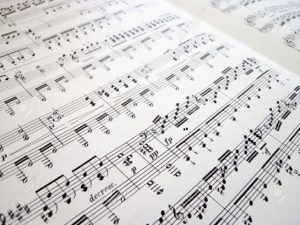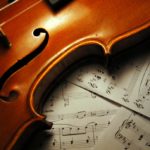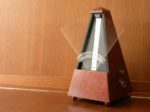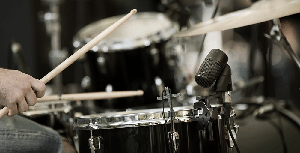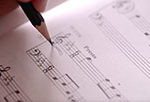
Here is a million dollar question that everyone gets asked once in awhile, “What would you tell your younger self if you could travel back in time?”
To be honest, it’s not something I’ve really thought about before, but I suppose there would be quite a number of things I would tell my younger self.
Just on the topic of music alone, there would probably be hundreds of tips and tricks I would tell myself to accelerate and enhance my musical abilities.
Since such a time-machine does not exist, I guess the next best thing I can do is to put down my thoughts for those of you who are just starting out and may be in the same spot that I was years ago.
I hope some of these points I bring up will help you along your musical journey.
To keep things brief, I’ll condense most of my thoughts into five points:
- Learn your fretboard
- Learn your music theory, including some jazz theory
- Recognize the impact of negative thoughts
- Recognize the difference between noodling and practicing
- Create long term objectives and use short term objectives to get there
1. Learn your fretboard
Without a doubt, the first time I really felt like I was getting somewhere with the guitar was when I finally mapped out and understood the fretboard. What I mean by this is, instead of just memorising sporadic licks, chord shapes, and scale shapes, I finally pieced all of it together and saw how every shape and pattern relates to each other. Many guitarists face the issue of knowing a bunch of chords and licks without knowing how they all relate to each other, and it’s probably the most common concern I hear from guitarists entering the intermediate stage.
Don’t get me wrong, I don’t think there is anything wrong with simply memorising shapes and patterns on the fretboard, especially at the beginning stage when you still have to work on your technique. However, there will come a point (maybe you’re there already) where you feel like all you know are memorised shapes and patterns, and if you were asked to form your own chord shapes, scale patterns, or if you were asked to improvise a solo, you’d be lost. The problem here is that you’ve only memorised these patterns, but you don’t quite understand how they are formed yet.
CAGED system
This is the point where you will have to figure out the fretboard and how it works. There are quite a number of approaches to make sense of the fretboard, but the one I like the most is the CAGED system.
With this system, the fretboard is broken down into five repeating boxes that can be transposed to different keys. This makes it a whole lot easier to understand as each box spans across four to five frets across the six strings. Compare that to seeing the fretboard as a whole, which is 20 to 22 frets across six strings.
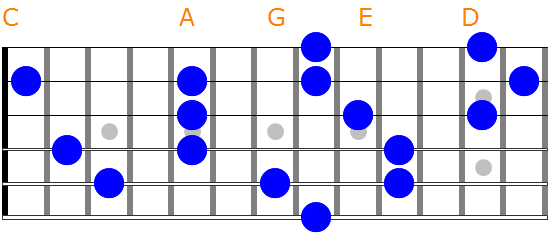
Every box has a corresponding scale, arpeggio, and chord shapes. Once you’ve mastered all five boxes, you can essentially see the fretboard as a whole again while understanding how to play any scale, arpeggio, or chord across the neck. You could just as easily play a Cmaj7 chord from the third fret as you could from the tenth fret.
So where can you go about learning about this CAGED system?
Of course, here at LPM, we do have some lessons on fretboard theory too.
Alternatively, you can find countless videos on YouTube explaining the system. You can also learn it from a book, which is the way I learned it. The book I used is called Guitar Fretboard Workbook. It has a ton of written exercises which I find to be especially helpful with remembering and understanding patterns.
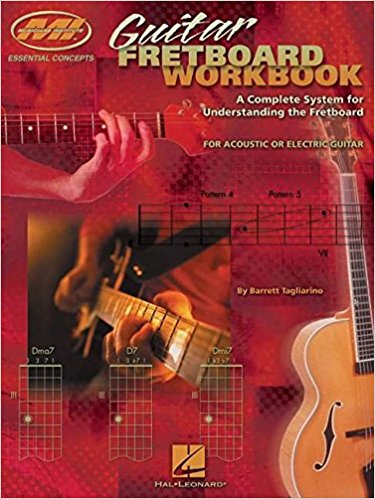
Note memorisation
Besides learning a system to understand the fretboard, the other thing I found to be very helpful was memorising all the notes across the fretboard. This can be pretty tedious and time consuming, but it can be done within a week or two. You can accomplish this by memorising one note (eg. F# note) across all six strings every two days or so.
In summary, to improve your guitar skills you need to ensure that you know the fretboard well. You can do so by using the CAGED system as we just learned or by memorising all the notes across the fretboard
2. Learn your music theory
Amongst musicians, another common piece of advice is to learn music theory. Those that don’t know their music theory don’t quite know what they are missing out on, and may even believe that it’s unnecessary to learn; those that do know their music theory wish they knew more and learned sooner!
There is no doubt that you can definitely make great music without any music theory. After all, the music comes first, then the theory comes around to attempt to explain why the music sounds so good. However, with music theory, it becomes quite a lot easier to make great music as you are building upon the knowledge of those that came before you.
I like to use this analogy: without music theory, it’d be like building a house with no knowledge of architecture or engineering. Sure, it’s still possible to successfully build a house, but it will take a lot of trial-and-error to finally get a house that won’t collapse on you. With music theory, it’s like building a house with an understanding of architecture and engineering, while also having the foundations built for you already.
Jazz theory
Additionally, you should also pick up a little bit of jazz theory. It’s never a bad thing to have more knowledge. Going back to the analogy of building a house, having a little jazz theory will be like understanding plumbing on top of your knowledge of architecture and engineering.
What I’m trying to say is, you will be able to build a better house. Your house could be a pop song, a guitar solo, or even a full-on orchestral arrangement! Additionally, having some music theory knowledge will also help you communicate your musical ideas to other musicians a lot better. A great book that I recommend on this topic is Music Theory for Guitarists.

3. Recognize the impact of unhelpful thoughts
Here is some advice that isn’t so obvious. I used to believe that the only way to keep improving is to have the mentality that you’re never any good and to constantly compare yourself to other musicians. This can lead you into a negative thought-loop and take away all motivation to further improve yourself.
There was a point in my musical journey where I no longer felt the joy and satisfaction from performing music. Even though I may have performed well, I would get extremely bothered by slight imperfections during my performance. This often put a lot of pressure on my next performance, and the following performance would often be affected negatively from the pressure as I was unable to simply relax and play.
In some ways, musicians are similar to athletes when it comes to peak performance. Both musicians and athletes have to be calm and relaxed while performing as that is when peak performance can occur.
So how did I snap out of it? First, I stopped taking my performances so seriously. Honestly, they were small performances to groups of maybe about 300 audience members at most. It really wasn’t a big deal. Once I stopped caring so much, my performances improved.
Someone once told me that musicians have to get on stage with two conflicting thoughts: one was that their performance right now is the most important of their lives, and the next thought is that in the grand scheme of things, this performance is meaningless.
Now that I am performing a lot more, I finally begin to see what he meant.
Next, I focused on myself. Instead of constantly comparing myself to others, I focused on what I wanted to do and worked on the things that interested me. The topic of music is incredibly vast, and we only have one lifetime to learn as much as possible. Why not focus your time on topics that interest you?
Don't get bogged down by negative thoughts. Trust yourself and work on improving your performance rather than comparing yourself to others.
4. Recognize the difference between noodling and practicing
We’re all guilty of sitting down with an intention to practice, but what follows is just hours of noodling tunes we already know over and over again. A single 30-minute practice session can be more productive than a 4 hour session of playing the same old songs. All you have to do is sit down with a clear intention on what you’d like to practice during the practice session. If you have to, use a timer to keep track of how long you’ve been working on certain songs.
The problem with noodling is that you often noodle over songs that you can already play relatively well, so you’re not really improving any new techniques. Practice should be conducted in short and focused bursts.
Trust me, this saves you a lot of time, and you improve exponentially faster. Remember to practice things that you can’t do during practice!
Remember, to get the most out of your practice, practice should be conducted in short and focused bursts and practice things that you can’t do yet.
5. Create long term objectives with short term goals to help you get there
The previous two subjects I mentioned led me to this final point. Once you get rid of all the unhelpful external noise and finally figure out what kind of musician you’d like to be, you can start making some long and short term objectives. Don’t feel too committed to long term objectives though, as they often change over time. Just like how you don’t have the same desires right now as you did fives years ago, your long term objectives constantly change with new experiences and new knowledge.
Short term objectives are great to help you work towards your long term goals as they can keep you motivated along the way. Remember to keep your short term objectives related to your long term one. Think of short term objectives as checkpoints along the way to a final destination.
A clear and well-planned path will allow you to improve exponentially quicker. Take the effort to simply sit down and think about what you’d like to do on a monthly or even weekly basis.
Father time
For generations, time machines have been popular devices in a pop culture, and it’s easy to see why.
I mean, who wouldn’t love to turn back the clock to redo a past event?
Unfortunately, we haven’t reached that point yet, technologically speaking, and we may never get there as it may just be physically impossible.
However, what we can do is record our experiences and talk about the things we may do differently in hopes that someone can benefit from our hindsight.
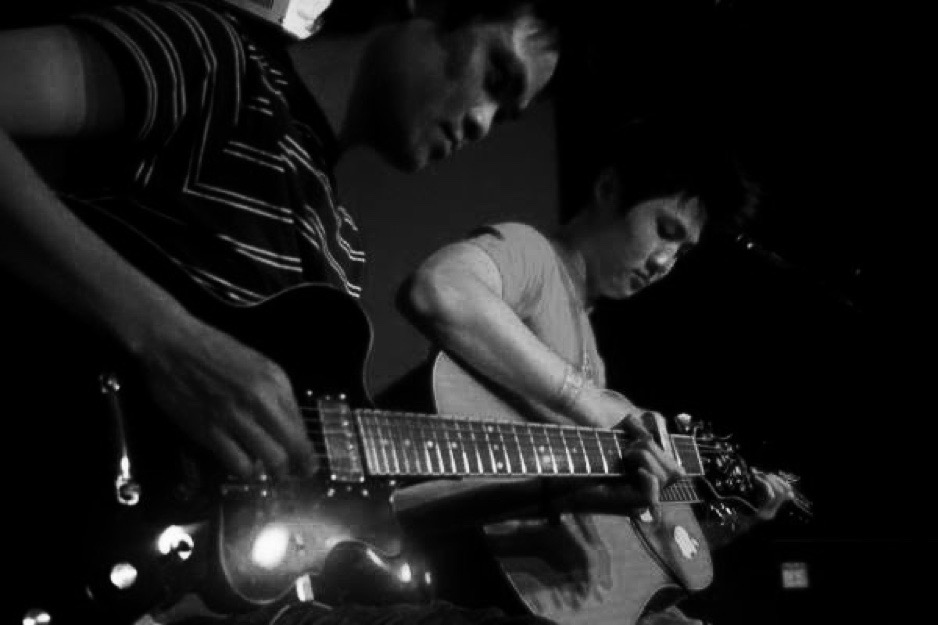
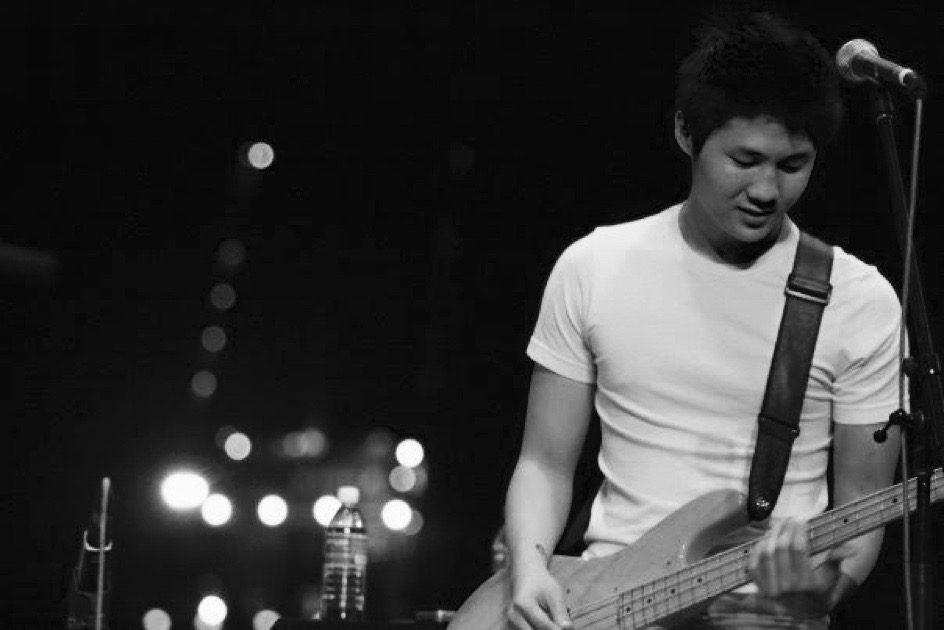
What are some things you would tell your younger self if you could travel back in time?
Let us know in the comments section! We’d love to hear your thoughts.
Ready to learn music?
Start learning with our 30-day free trial! Try our music courses!
About Liberty Park Music
LPM is an online music school. We teach a variety of instruments and styles, including classical and jazz guitar, piano, drums, and music theory. We offer high-quality music lessons designed by accredited teachers from around the world. Our growing database of over 350 lessons come with many features—self-assessments, live chats, quizzes etc. Learn music with LPM, anytime, anywhere!


